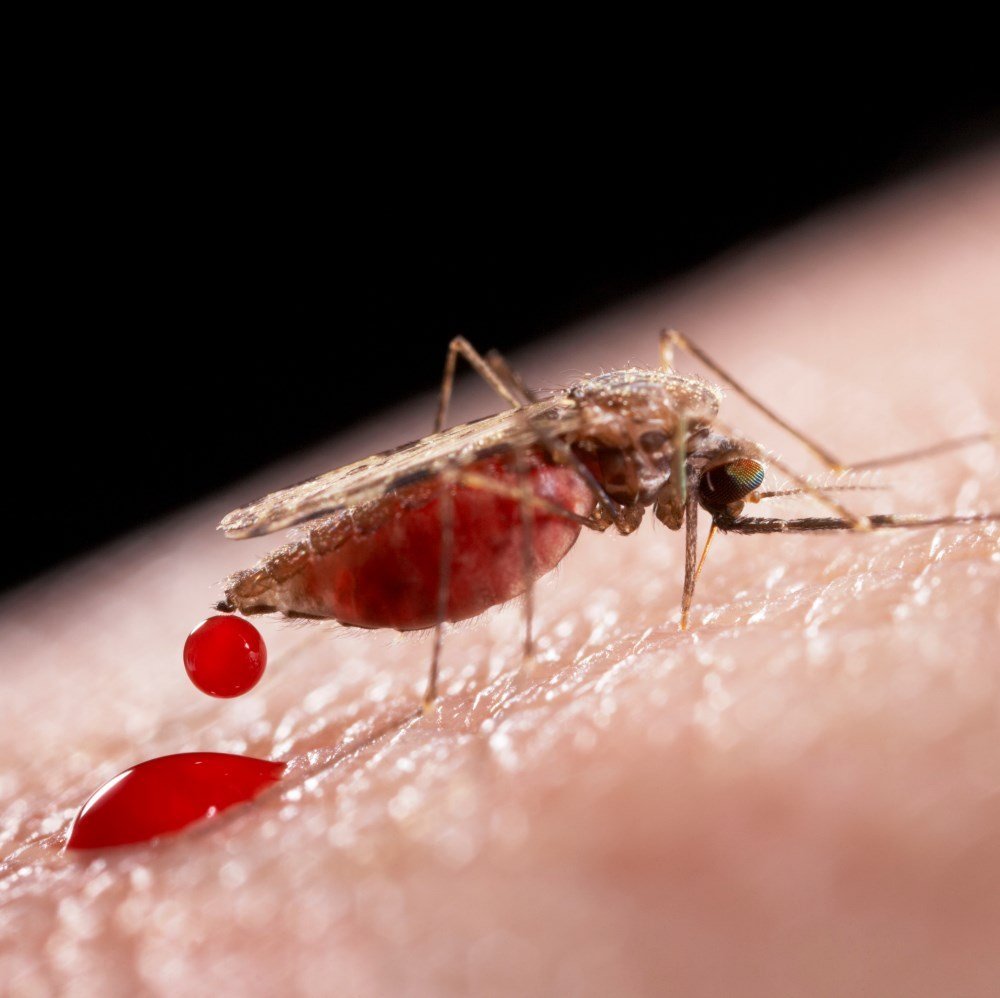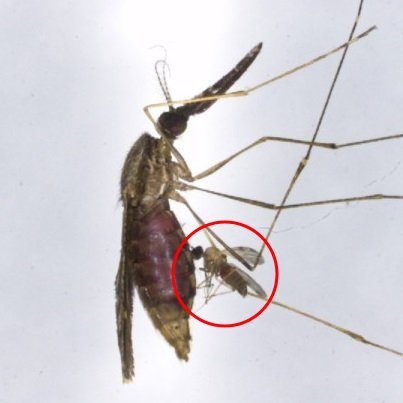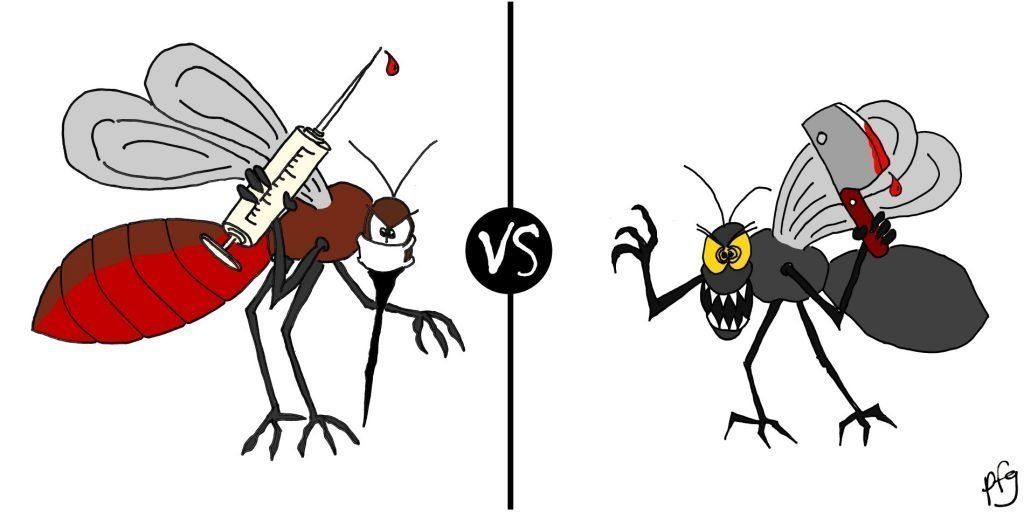Reference
Mozzie vs Midge – Surgeon vs Butcher?
If you’re bitten by a mozzie or a midge it doesn’t really matter which of the two it was – both are at the very least annoying and unpleasant, and both can spread a wide range of diseases depending on where in the world you are. Biting midges (variously called sandflies, no-see-ums, nik-niks, punkies etc) and mosquitoes are similar in other aspects too. In both cases, only the female needs blood (in order to produce eggs) and both inject a blood-thinning saliva into the host. On closer inspection though they differ greatly, and a simple comparison could be that if mosquitoes are the surgeons, then biting midges are the butchers!
Thankfully No Mozzie repels mosquitoes and biting midges!
So What’s the Difference?
Mosquitoes are equipped with a complex feeding proboscis that actually consists of six separate needle-like parts – two for cutting into flesh, two for holding that flesh in place, one to probe for a blood vessel and suck up the blood, and finally one for injecting the blood-thinning saliva (along with any parasites and viruses the mosquito may be unwittingly carrying). The long proboscis means that mosquitoes can easily “bite” through tight fitting clothing like a T shirt or cotton dress. The proboscis parts are so fine that they produce very little pain in the host so the host is often unaware that it is providing a blood meal. This is the really clever part – it allows the mosquito time to filter the blood and separate the protein-rich blood cells from the blood plasma and excrete what it doesn’t need! This allows it to extract several times more protein than if it just grabbed the blood and buzzed off. This diuresis process also provides a cooling mechanism for the mosquito so that it doesn’t overheat from ingesting so much warm blood.

Nice! A mosquito kindly demonstrating the filtering/diuresis process that enables it to absorb more protein from the blood meal. It also helps keep the mosquito cool after taking on extra heat from (in this case) that lovely warm mammalian blood.
Biting midges are a little less refined. They are much smaller than mosquitoes and their mouth-parts are like coarse saws. Rather than delicately probing for a blood vessel, their approach to getting blood is more “smash and grab”. They land on a host, find a suitable spot, and bite – gyrating their head as they do so to inflict maximum damage. This creates a tunnel and pool of blood that they then quickly slurp up, after adding the blood-thinning saliva. Although midges may also use diuresis for efficiency, the pain produced by this more butcher-like approach can be enough to alert the host to brush off the midge so there’s no opportunity to calmly filter the blood cells out.

This amazing photo was taken by researchers in China who found a biting midge feeding off an engorged mosquito. It shows the tenacity of biting midges – their mouthparts enable them to attach to a host in motion. It also shows how diseases can travel via multiple vectors in their journey from host to host.
Department of Tropical Infectious Diseases, Second Military Medical University,Shanghai, China
The different biting approaches lead to different types of discomfort. Arguably the mosquito bite is more itchy, while midge is more painful, but its a close call.
Either way, depending on where you are in the world, the irritation may be the very least of your concerns! So, get your No Mozzie now.


